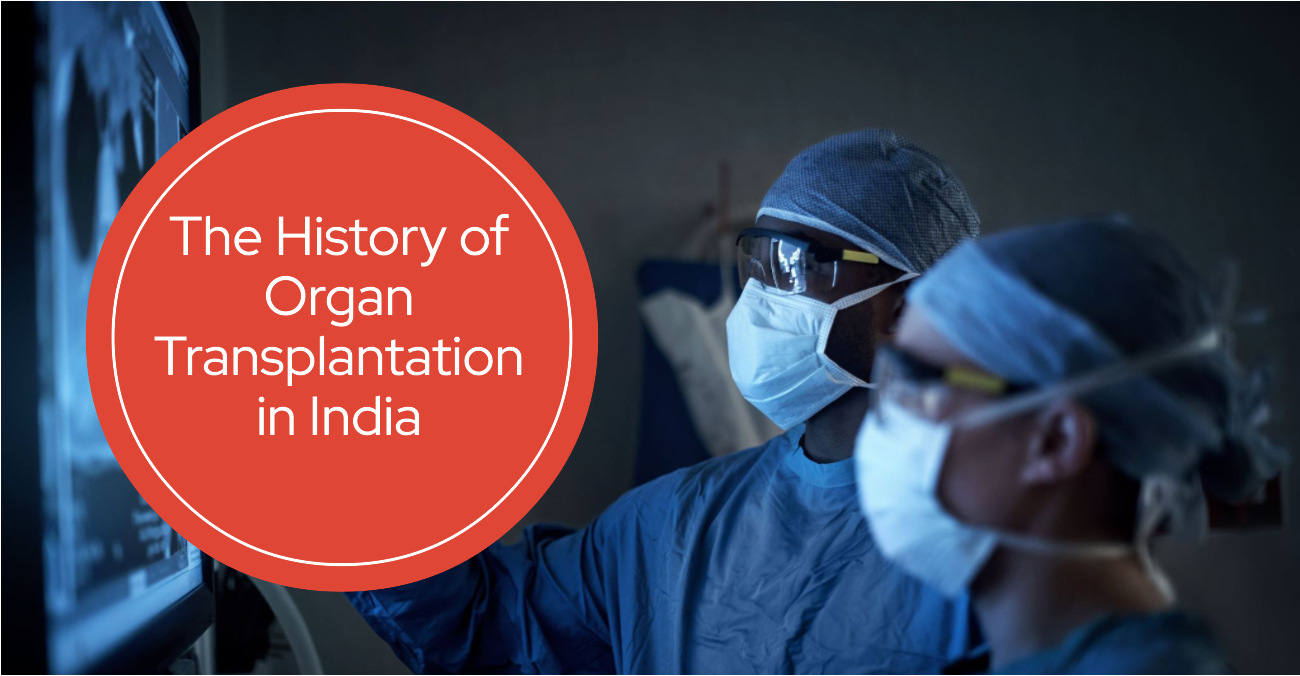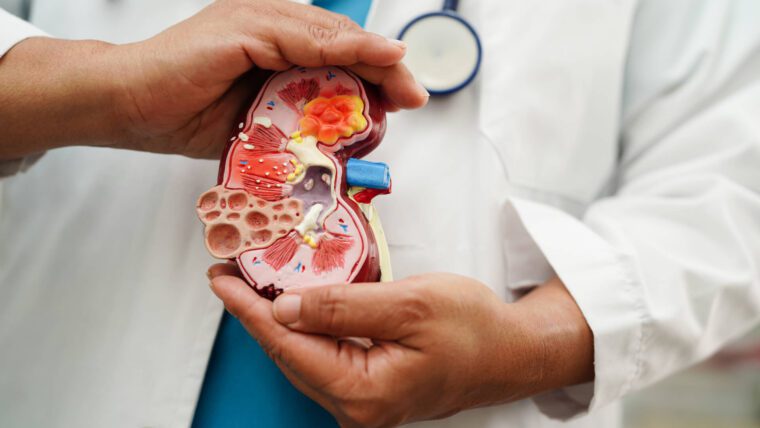The history of organ transplantation in India is a remarkable tale of perseverance, dedication, and medical advancements. From ancient surgical craft to modern-day transplant procedures, the journey has been arduous and full of challenges. In this article, we will delve into the milestones and pioneering efforts that have shaped the field of organ transplantation in India, particularly focusing on kidney transplants. We will also explore the role of live donors, the evolution of transplantation laws, and the significant progress made in the field over the years.
1. The Early Days: Susruta’s Surgical Craft
In ancient India, the remarkable surgical craft of Susruta served as the foundation for the concept of transplantation. Susruta, an accomplished surgeon and physician, is credited with performing groundbreaking procedures, including the reconstruction of deformed noses using tissue from donor sites. This early form of transplantation demonstrated the ancient Indian physicians’ understanding of human anatomy and surgical techniques.
Susruta’s pioneering work laid the groundwork for the development of medical knowledge in India, inspiring generations of physicians to explore innovative ways to address medical challenges. Although the techniques used in ancient times may not resemble modern transplantation procedures, the spirit of innovation and the quest to improve patients’ lives through surgical intervention were evident even then.
2. The Landmark Achievement: The First Successful Renal Transplant
The year 1954 marked a turning point in medical history when American surgeon Joseph Murray achieved the first successful renal transplant between identical twin brothers, Richard and Ronald Herrick. This groundbreaking surgery not only demonstrated the possibility of transplanting organs from one individual to another but also showcased the potential for long-term graft survival. Murray’s pioneering work paved the way for the evolution of organ transplantation as a viable treatment option for patients with organ failure.
The success of the Herrick twin transplant garnered international attention and stimulated further research and interest in the field of organ transplantation. It inspired medical professionals worldwide to explore the complexities of immunosuppression, tissue matching, and post-operative care to improve the success rates of organ transplants. Murray’s work also initiated a new era of live donor transplants, showing that healthy individuals could selflessly donate organs to save the lives of their loved ones, friends, or even strangers in need. This landmark achievement marked the beginning of a new chapter in medical history, offering hope and a renewed sense of possibility for patients with end-stage organ failure.
3. India’s Pioneering Efforts: The KEM Hospital Transplants
In the mid-1960s, India entered the realm of organ transplantation with pioneering efforts at the KEM Hospital in Mumbai. Dr P K Sen and Dev Pardanani led the first-ever attempts at kidney transplantation in the country using deceased donors. Although these initial efforts faced unfortunate outcomes, they were significant milestones in India’s medical history, laying the groundwork for future advancements in organ transplantation.
Despite the challenges and setbacks, the spirit of determination and resilience within the Indian medical community was evident. The second attempt at KEM Hospital in April 1966 was a valiant effort to provide a patient with chronic renal failure a new lease on life. These early experiences led to valuable learnings, with the medical community beginning to comprehend the complexities and intricacies of organ transplantation. This set the stage for subsequent endeavors and instilled hope for the future of organ transplantation in India.
4. The Turning Point: CMC Hospital’s Live Donor Transplant
On 2nd February 1971, CMC Hospital in Vellore witnessed a momentous event that changed the landscape of organ transplantation in India. Dr M Mohan Rao, K V Johny, and Martin Isaac accomplished the first successful live donor renal transplant in the country. This remarkable feat not only demonstrated the medical team’s skill and expertise but also showcased the potential of live donor transplants as a viable solution for patients suffering from end-stage renal disease.
The success at CMC Hospital was not without its challenges. The skepticism from the administration and the high stakes of the procedure underscored the determination and dedication of the medical team involved. Their commitment to success led them to prepare two pairs of donors and recipients to increase the chances of a positive outcome. The success of this pioneering effort marked a turning point in India’s transplantation journey, proving that organ transplantation was feasible and had a bright future in the country. This achievement not only brought hope to countless patients in need of organ transplants but also inspired other medical institutions to explore this life-saving medical intervention further.
5. Advancements and Challenges: The Role of Commerce
As organ transplantation gained momentum in India, the field encountered challenges related to commercialization. Middlemen seeking monetary gains exploited the situation, leading to ethical dilemmas and concerns about organ trafficking. The need for legislation to regulate organ transplantation became evident, culminating in the enactment of the Transplantation of Human Organs Act (THOTA) in 1994.
THOTA was a significant step forward, as it acknowledged brain death as the end of life, thereby enabling the retrieval of organs from deceased donors. This legislation paved the way for a more structured and ethical approach to organ transplantation in India. It established a legal framework for deceased organ donation and transplantation, addressing the issues of organ shortage and the exploitative practices of the past.
Despite the progress, challenges persisted. There was a need for greater awareness about the importance of organ donation and the value of deceased donors in saving multiple lives. Additionally, ensuring equitable access to transplantation facilities across different regions of the country remained a concern. However, THOTA marked a pivotal moment in India’s transplantation landscape, as it provided a strong foundation for future advancements and greater standardization of transplantation procedures.
6. Strides in Organ Transplantation: India’s Progress
In the years following the enactment of THOTA, India witnessed significant progress in the field of organ transplantation. The medical community made remarkable strides in surgical techniques, immunosuppressive medications, and post-operative care. These advancements contributed to improved patient outcomes and increased graft survival rates, thereby offering new hope to patients with organ failure.
Kidney transplantation, in particular, saw exponential growth, becoming a standard treatment for patients with end-stage renal disease. The establishment of specialized transplant centers across the country, equipped with state-of-the-art facilities and skilled medical personnel, further bolstered India’s position as a leading destination for organ transplantation in the region.
Moreover, India’s expertise in liver, heart, and lung transplants also expanded, providing life-saving options for patients with severe organ failure in these respective organs. Medical professionals continued to collaborate and share knowledge, fostering an environment of continuous learning and improvement in the field of organ transplantation.
As India continued to make strides in organ transplantation, the emphasis on ethical practices, transparency, and patient safety remained paramount. The medical fraternity, in partnership with non-governmental organizations and government agencies, worked tirelessly to promote deceased organ donation and combat organ trafficking.
7. Kidney Transplant – A New Hope for Patients with End-Stage Renal Disease
For patients suffering from end-stage renal disease (ESRD), kidney transplantation has emerged as a beacon of hope, offering the prospect of a new lease on life. Dialysis, though life-saving, poses significant challenges and limitations, impacting the quality of life for ESRD patients. Kidney transplantation, on the other hand, offers the possibility of long-term recovery, improved quality of life, and reduced medical expenses compared to lifelong dialysis treatment.
The success of kidney transplantation in India has not only improved patient outcomes but has also increased awareness about living organ donation. Families and friends of patients have come forward to donate kidneys altruistically, exemplifying the inherent compassion and empathy of the human spirit.
With advancements in surgical techniques, organ preservation methods, and immunosuppressive medications, the risks associated with kidney transplantation have significantly reduced. Improved patient selection criteria, meticulous pre-transplant evaluations, and post-operative care have further contributed to higher success rates.
Despite the progress, there is still a considerable gap between the demand and availability of organs for transplantation. Promoting deceased organ donation through awareness campaigns and education remains a critical focus area for the medical community and policymakers.
8. Liver, Heart, and Lung Transplants – Expanding Horizons
While kidney transplantation has been at the forefront of organ transplantation in India, there have been significant developments in liver, heart, and lung transplants as well. Liver transplantation has become a well-established procedure in the country, with a growing number of experienced liver transplant surgeons and well-equipped transplant centers.
India’s achievements in heart transplantation have also been noteworthy, offering a glimmer of hope to patients with end-stage heart failure. Heart transplant centers have demonstrated the expertise to handle complex cases, providing patients with a chance for extended survival and improved quality of life.
Furthermore, lung transplantation, though relatively newer in India, has shown promise in treating patients with severe lung diseases, including chronic obstructive pulmonary disease (COPD) and interstitial lung diseases. The successful lung transplants have brought renewed hope to patients who were previously bound by the constraints of debilitating respiratory conditions.
As the medical community gains more experience and expertise in these complex procedures, the scope for successful organ transplantation continues to expand, giving patients with severe organ failure a renewed sense of hope and optimism.
9. Challenges and Future Prospects
Despite the tremendous progress made in organ transplantation in India, several challenges persist. The shortage of organs for transplantation remains a critical concern. While living donor transplants have gained popularity, deceased organ donation rates need to be substantially increased to meet the growing demand.
Ensuring equitable access to transplantation facilities across different regions of India is another pressing issue. Rural and economically disadvantaged communities often face barriers in accessing transplant centers, resulting in disparities in healthcare access and outcomes.
Additionally, there is a constant need to maintain ethical standards and combat organ trafficking. Rigorous monitoring and implementation of legal regulations, along with continuous public awareness campaigns, are necessary to curb unethical practices in organ transplantation.
Despite the challenges, the future of organ transplantation in India holds great promise. Advancements in regenerative medicine and stem cell research may open up new avenues for organ replacement and regeneration, reducing the reliance on donor organs.
Continued research into immunosuppressive medications, organ preservation techniques, and post-operative care will further enhance transplant outcomes. The development of cutting-edge technologies and telemedicine may help extend transplantation services to underserved regions, improving patient access to life-saving treatments.
Conclusion
The journey of organ transplantation in India has been characterized by remarkable achievements, pioneering efforts, and significant advancements. From the ancient surgical craft of Susruta to modern live donor transplants, the medical community has demonstrated unwavering dedication in improving patients’ lives through organ transplantation.
The successes in kidney, liver, heart, and lung transplants have transformed the lives of countless patients, offering hope, renewed health, and a chance at a brighter future. However, challenges related to organ shortage, equitable access, and ethical practices persist, necessitating ongoing efforts from all stakeholders.
As India continues to build on its accomplishments, the emphasis must remain on raising awareness about deceased organ donation, strengthening medical infrastructure, and nurturing a culture of compassion and altruism towards organ transplantation. With continued dedication, collaboration, and innovation, India can further solidify its position as a global leader in organ transplantation, extending the gift of life to countless patients in need.




